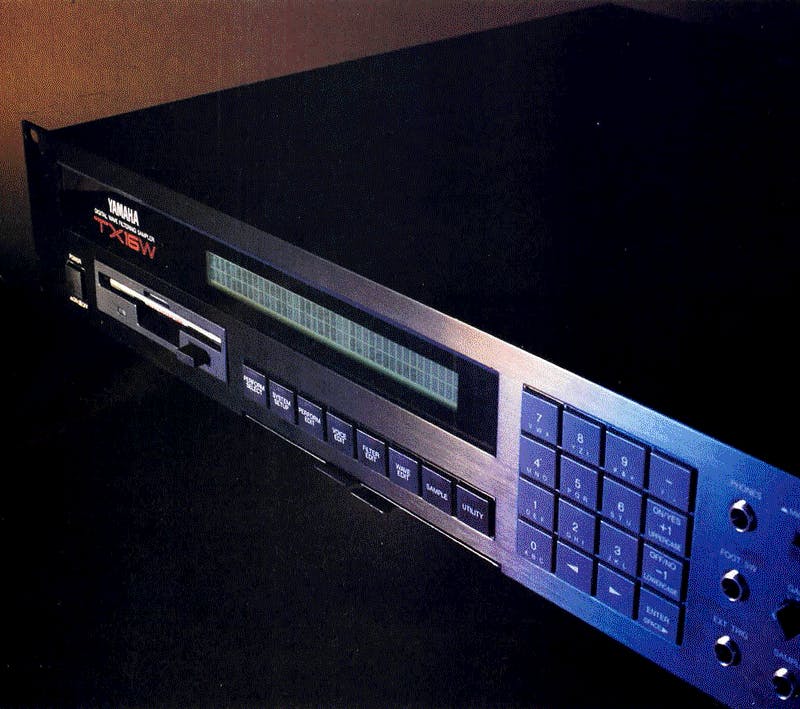1987 (Dec.)
Initially sold for ¥260,000
The TX16W is Yamaha's first and only attempt to enter the sampler's market during the late 80s, which started to gain popularity after the mid 1980s thanks to decreasing cost of digital memory. However, this module turned out to be quite unsuccessful due to the strong presence of other established players such as E-MU, Ensoniq or Akai and the big flaws in the operating system, so much that the company didn't try again for a whole decade.
The hardware was actually capable, with a Motorola 68000 moving 12bit samples and 8 separate outputs. Standard model was equipped with 1.5MB but could be expanded to 6MB and it could read 720KB floppy disks, although it didn't use the DOS format. It's able to sample sounds up to 50kHz mono or up to 33.3kHz stereo, with a distictive character that was reviewed as more pleasant than famous competitors such as the AkaiS900.
As the name implies, 16-part multitimbral patches could be created, provided that enough memory was available, making it a good early workstation.
The OS, on the other hand, was incredibly complicated, slow to load, and heavily prone to bugs and crashes. Fortunately, to better exploit all the capabilites of the hardware, an alternative operating system was developed by third parties during the following years, called Typhooon. But it came too late to save this machine, that could have deserved a keyboard incarnation to make the interface less hostile to users.
The interface layout doesn't help either: it's very difficult to keep track of the voice being edited and which ones are filled with data. If the controls had to be all digital, Yamaha still did a better job with the TX802 or even the DMP11, grouping the "Mode select" buttons and giving the user a physical button for each of the 8 voices.
Allegedly, it's Aphex Twin's favourite sampler from back in the day.






